At Cash Flow Capital, we've always put a significant emphasis on a business's ability to generate and manage cash flow. Our credit model for our short-term unsecured product is very much focused on opening up and unravelling the income and cash flow statement to gather deep insights into the short-term health of the business. On the contrary, our secured offerings almost exclusively look at your balance sheet and we focus more on the unencumbered assets available to secure a loan amount. A longer-term loan is more focused on making sure the business' overall health is intact and that there is a history of solid performance over time. The income statement is then consulted to make sure that the monthly instalment can be repaid given the overall capital structure.
What we've come to see from SMEs in South Africa is that very few businesses focus on both these components. Rather, there is either a focus on growing balance sheet assets with seemingly constant cash flow dilemmas or owners only look at the bank account, and as long as there is more money coming in than out, they leave the rest up to their accountants not knowing that they could be missing out on adding exponential value to the balance sheet. Having a grip on both and understanding how these two elements interact will not only make your business more valuable but it will also be easier to raise capital both long and short term in nature.
The balance sheet:
The balance sheet is a snapshot of a business's financial position at some point in time. It states the asset, liabilities and reserves on the day of which the snapshot is taken. The health of a business is implied by the ratio of these figures to one another. For example, I know that the company is profitable if I can see an increase in retained income from one period to the next. This income could have come as a result of normal trading, or; if there were changes in the level of assets, it might have been that assets were sold. Many things can be extrapolated from looking at the balance sheet, and ultimately the bigger the assets and equity of a business the more valuable that business is perceived to be. You need to make money to buy more assets (even if you use debt to buy assets) and this is where the income statement comes into play.
The income statement and Cash Flow:
On the other hand, the Income statement is usually helpful when looked at over a period of time. It breaks down the selling of goods and subtraction of all the expenses needed to operate the business. It is easy to see where the business is overspending on certain line items and how this is affecting the profitability. The cash flow statement shows actual cash movement and takes into account the timing of cash flows. A bank account is a good proxy for the cash flow statement as you're looking at a live feed of money coming in and going out of the business. While it is good to see that the business is profitable on the income statements, the timing of cash flows can have huge consequences. For example, if a client places an order, the sale is recorded in the income statement; however, the actual cash has not been received. The business still needs to buy the goods, pay salaries etc and therefore might find itself having to sell assets/ take on debt to free up cash in order to continue operations.
I hope it is a bit clearer from the above that to truly understand your business you need to look at all of these elements. Ideally, you want a business with a solid level of retained earnings and low liabilities compared to assets. You then want an income statement that shows you are making enough profit for all the expenses and that you are able to grow the reserves and assets on the balance sheet by doing this. Lastly, you want to make sure that your cash management is meticulously monitored so that any small change in circumstances doesn't leave the business without cash to continue effectively serving its customers.
Top things funders look at:
Short term:
- Overall bank balance and not going over your limit
- Missed/rejected payments due to no more space in the bank account
- Consistency of monthly turnover or bank credits
- Able to turn a monthly profit with the current cost structure in place
Long term:
- Overall gearing of the balance sheet (how much debt you have in proportion to assets).
- Nature of assets and value of unencumbered assets
- The equity/retained earnings layer indicates how resilient a business is to changes in the market
- Ratio of current assets and liabilities (debtors and suppliers) to see that there isn't a gap in cash flow
- Is there sufficient operating income and cash flow to service the current and proposed debt structure


